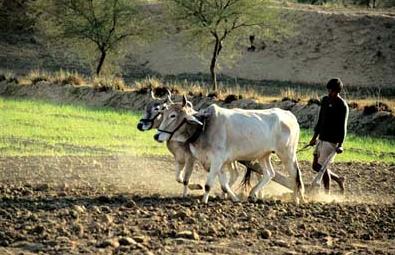Rice breeding programme in India was started by Dr. G. P. Hector, the then Economic Botanist during 1911 in undivided Bengal with headquarters at Dacca (now in Bangladesh). Subsequently, in 1912, a crop specialist was appointed exclusively for rice in Madras Province. Prior to the establishment of the Indian Council of Agricultural Research (ICAR) in 1929, Bengal and Madras were the only provinces which had specialist exclusively for rice crop. After the establishment of ICAR, it initiated rice research projects in various states of the country and by 1950, 82 research stations in 14 states of the country were established, fully devoted for rice research projects. These research stations, mainly by the pure line method of selection, released 445 improved varieties. These varieties were of various kind such as -
1. Earliness
2. Deep water and flood resistant
3. Lodging resistant
4. Drought resistant
5. Non-shredding of grains
6. Dormancy of seed
7. Control of wild rice
8. Disease resistant
9. Higher response to heavy mannuring.
Thus, during the pure line period of selection from 1911-1949, the advantage of natural selection have been fully exploited and there have been varieties available for every rice ecology. During the early period of breeding research programme, varieties were developed suitable for specific stress situation or for resistant to particular disease. When, after World War II, synthetic fertilizers became popular, efforts were made to identify varieties which respond to heavy fertilization.
After the establishment of the Central Rice Research Institute (CRRI) at Cuttak in 1946 by the Govt. of India, rice research and training received an added impetus. There had been a systematic screening of exotic types from the genetic stocks. Besides, for the purpose of direct introduction in the country, many Chinese, Japanese, Taiwanese and Russian types were also tested. The Chinese types, which were first, prior to 1947, tested in Kashmir Valley, found fairly successful and the Japanese and Russian types were found unsuitable under Indian conditions due to poor yield, unacceptable grain qualities and susceptibility to blast.
Inter-racial hybridization programme between japonicas and indicas was initiated during 1950-54. The Food and Agriculture Organization of the United Nations with a view of improving production of cereal on an international basis after the end of World-War II, launched a collaborative project japonica X indica hybridization in South-East Asian countries. The object of these project was to transfer the high yielding capacity and response to use higher dose of fertilizers into local indica varieties from japonica varieties. Indica varieties were already well adapted to the local conditions and had tolerance to diseases and pests of the region. A parallel project of japonica X indica hybridization was also started by ICAR with the same objectives. These projects could achieve very limited success. Only four varieties, viz. - Malinja and Mashuri in Malaysia, ADT-27 in Tamil Nadu, India and Circna in Australia were released from more than 700 hybrid combinations.
1. Earliness
2. Deep water and flood resistant
3. Lodging resistant
4. Drought resistant
5. Non-shredding of grains
6. Dormancy of seed
7. Control of wild rice
8. Disease resistant
9. Higher response to heavy mannuring.
Thus, during the pure line period of selection from 1911-1949, the advantage of natural selection have been fully exploited and there have been varieties available for every rice ecology. During the early period of breeding research programme, varieties were developed suitable for specific stress situation or for resistant to particular disease. When, after World War II, synthetic fertilizers became popular, efforts were made to identify varieties which respond to heavy fertilization.
After the establishment of the Central Rice Research Institute (CRRI) at Cuttak in 1946 by the Govt. of India, rice research and training received an added impetus. There had been a systematic screening of exotic types from the genetic stocks. Besides, for the purpose of direct introduction in the country, many Chinese, Japanese, Taiwanese and Russian types were also tested. The Chinese types, which were first, prior to 1947, tested in Kashmir Valley, found fairly successful and the Japanese and Russian types were found unsuitable under Indian conditions due to poor yield, unacceptable grain qualities and susceptibility to blast.
Inter-racial hybridization programme between japonicas and indicas was initiated during 1950-54. The Food and Agriculture Organization of the United Nations with a view of improving production of cereal on an international basis after the end of World-War II, launched a collaborative project japonica X indica hybridization in South-East Asian countries. The object of these project was to transfer the high yielding capacity and response to use higher dose of fertilizers into local indica varieties from japonica varieties. Indica varieties were already well adapted to the local conditions and had tolerance to diseases and pests of the region. A parallel project of japonica X indica hybridization was also started by ICAR with the same objectives. These projects could achieve very limited success. Only four varieties, viz. - Malinja and Mashuri in Malaysia, ADT-27 in Tamil Nadu, India and Circna in Australia were released from more than 700 hybrid combinations.

